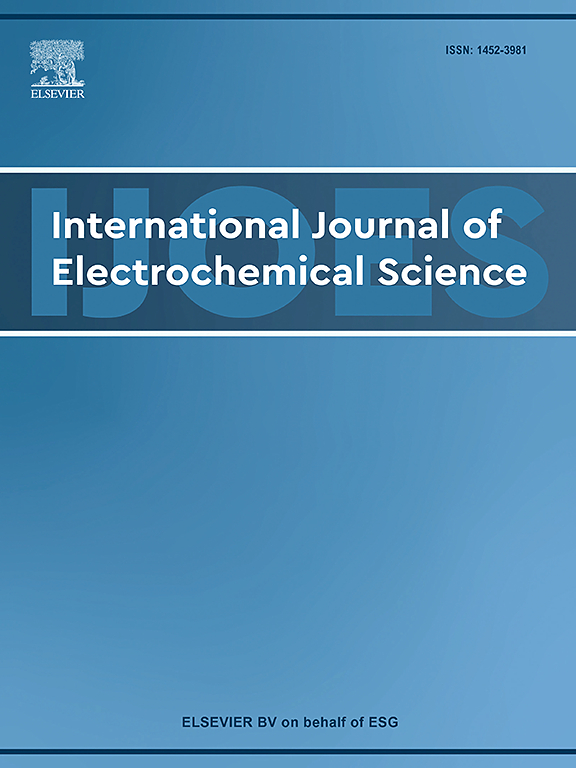Study of a Fe₂N₄@graphene catalyst for electrocatalytic nitrogen reduction
IF 1.3
4区 化学
Q4 ELECTROCHEMISTRY
International Journal of Electrochemical Science
Pub Date : 2025-01-01
DOI:10.1016/j.ijoes.2024.100911
引用次数: 0
Abstract
Ammonia is one of the most important raw materials in human industrial production and agricultural life. At present, the industrial ammonia production process needs to consume a large amount of fossil fuels to obtain a high-temperature and high-pressure reaction environment, which leads to serious environmental pollution caused by the synthetic ammonia industry. Electrocatalytic nitrogen reduction reaction (NRR) uses nitrogen and water resources as raw materials, and uses electricity generated by clean energy to provide power to achieve ammonia synthesis. It is one of the green and environmentally friendly ammonia production methods. However, the electrocatalytic synthesis of ammonia is still difficult to achieve large-scale industrial applications, mainly because the catalyst used in the reaction is difficult to meet the requirements of high activity and high selectivity. In this paper, a catalyst with four N-coordinated Fe atoms on graphene (Fe2N4@G) was designed to study the mechanism of electrocatalytic reduction. Firstly, the stability of Fe2N4@G catalyst at 300 K was studied by ab initio molecular dynamics. Secondly, the adsorption mode of N2 on Fe2N4@G and its hydrogenation reduction reaction were studied. The best reduction mechanism of N2 on Fe2N4@G was an enzymatic mechanism, which was consistent with the natural nitrogenase mechanism. And the free energy of the rate-determining step is only 0.50 eV, indicating that Fe2N4@G has excellent electrocatalytic activity. Finally, the side reaction energy of HER and lattice N atom with NRR is higher than that of NRR, indicating that Fe2N4@G catalyst has good selectivity and stability. This paper provides new insights into the design and preparation of diatomic catalysts for NRR.
求助全文
约1分钟内获得全文
求助全文
来源期刊
CiteScore
3.00
自引率
20.00%
发文量
714
审稿时长
2.6 months
期刊介绍:
International Journal of Electrochemical Science is a peer-reviewed, open access journal that publishes original research articles, short communications as well as review articles in all areas of electrochemistry: Scope - Theoretical and Computational Electrochemistry - Processes on Electrodes - Electroanalytical Chemistry and Sensor Science - Corrosion - Electrochemical Energy Conversion and Storage - Electrochemical Engineering - Coatings - Electrochemical Synthesis - Bioelectrochemistry - Molecular Electrochemistry

 求助内容:
求助内容: 应助结果提醒方式:
应助结果提醒方式:


